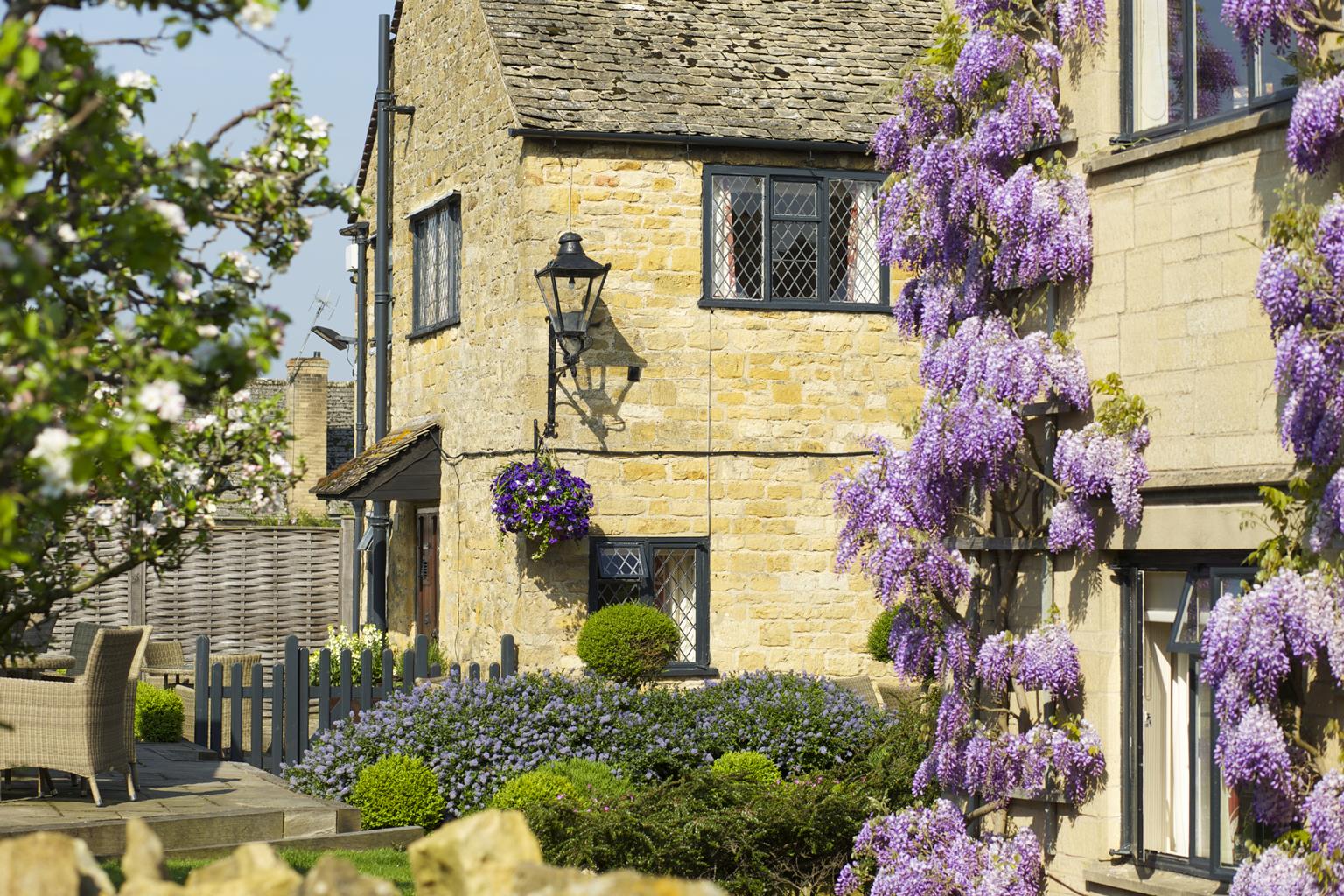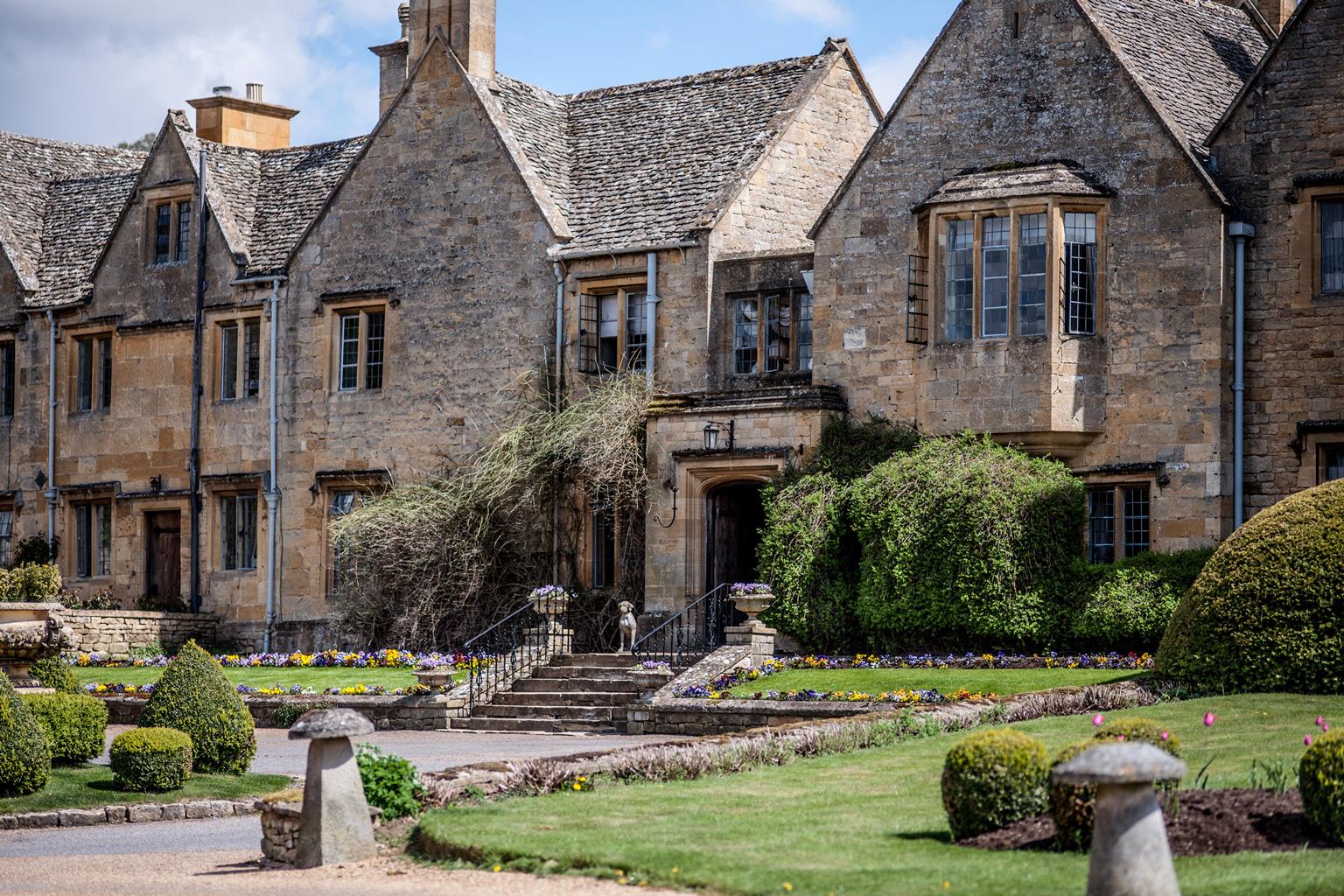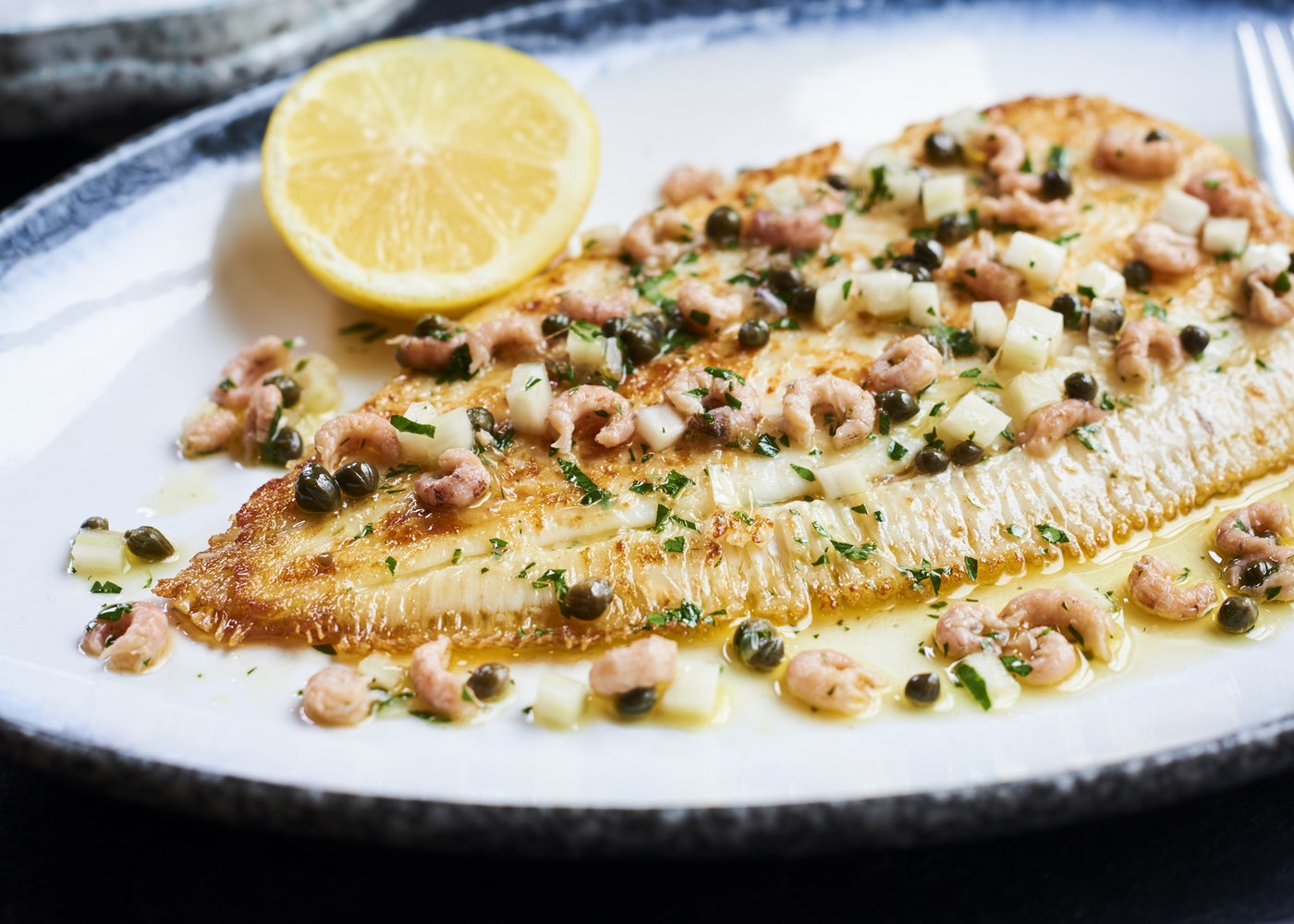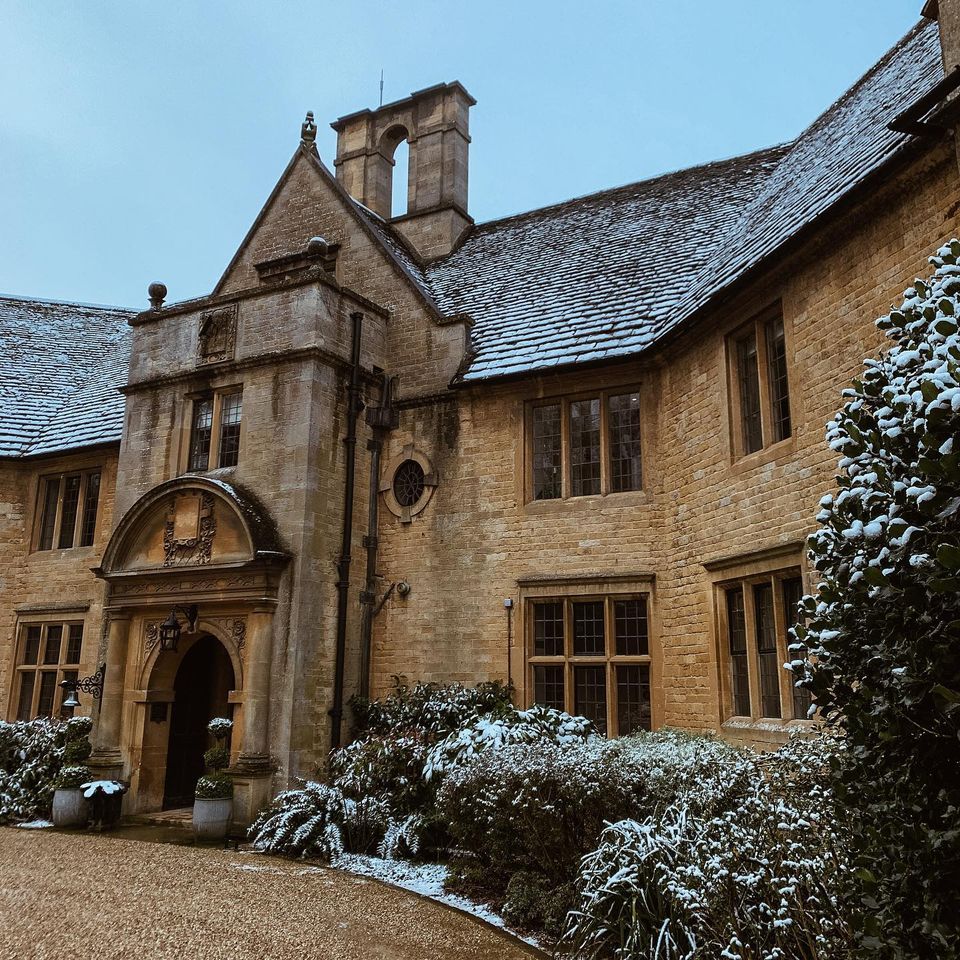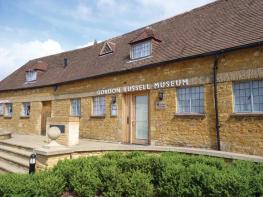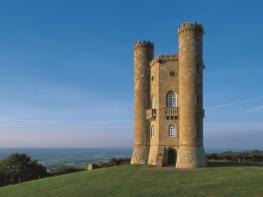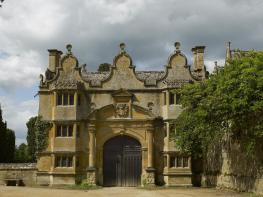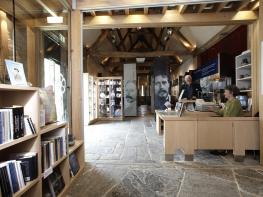Bumble Bee Cottage is a one-bedroom Cotswold cottage centrally located in the village, with a…
William Morris and Broadway Tower

A haunt of the Arts and Crafts pioneer towers above this Worcestershire village
5.25 miles (8.4kms)
About the walk
If Caspar Wistar, the 18th-century American anatomist after whom the wisteria genus was named, were alive today, a springtime visit to Broadway would give him much pleasure. Visitors come in swarms to this Worcestershire village, which lies against the edge of the Cotswolds – understandably so, for it’s one of the prettiest places in England. The honey-stone buildings stretch for the best part of a mile (1.6km). Horse chestnut trees flame with pinky-red candelabras and walls drip with the brilliant lilac flowers of wisteria.
There are many buildings of note in Broadway, not least the partly 14th-century Lygon (pronounced ‘Liggon’) Arms. Aside from being a fine building, this hotel is also notable for its historic neutrality in the Civil War, with both Charles I meeting his supporters there in 1645, and Oliver Cromwell reputed to have stayed there in 1651 on the night before the decisive clash in the Battle of Worcester.
Less historic but just as interesting is Broadway Tower. The 6th Earl of Coventry’s four-storey folly built in 1798 has served as home to a printing press and a farmhouse, but is best known as a country retreat for William Morris (1834–96). Appropriately, in 1877 he founded the Society for the Protection of Ancient Buildings. Artistically, Morris empathised with the Pre-Raphaelite Brotherhood; a group, primarily of painters, founded in 1849 by William Holman Hunt. They believed that British art had taken a ‘wrong turn’ under the influence of Raphael, who, with Michelangelo and Leonardo da Vinci, had made up the trio of most famous Renaissance artists. The English Pre-Raphaelites challenged the teachings of the establishment, producing vividly coloured paintings, lit unconventionally, which had an almost flat appearance. Fascinated by pre-industrial techniques, Morris and some friends set up a company producing crafted textile and stained-glass products.
Walk directions
From the car park, walk back down Church Close then turn left. At the far end of the church wall turn left down a track, soon passing a tiny orchard. Continue straight ahead and through a gate by some horse jumps. Turn right along a grassy strip, through a gate and across a small bridge over a rivulet. Turn slightly left across uneven pasture. Go through a kissing gate and up to the far right-hand field corner and through a metal kissing gate. Go right, through a green kissing gate, and over a sleeper bridge beside a stone barn.
Go slightly left up a grassy field, passing a waymarker in a boggy patch to reach a stile. Continue over this and up a grassy field (horse jumps on right). Cross another stile, cutting slightly right across a small field corner to a large gap in the hedgerow. Continue along this line through a further long grassy field. Pass a prominent large sycamore tree and go through gates either side of Millennium Woodland. Maintain the line across a large field and down to go through a metal gate by a corner of woodland. Ignore a track leading immediately right, and go out of the woodland via a step-over gate.
Slant uphill, passing in front of a stone bungalow. Just before the woodland ahead, turn left through a gate. Join a tarmac road, heading left and steadily uphill. At the brow, turn left through a gate before the car park for Broadway Tower Country Park and pass the Morris & Brown café. Beyond this a tall kissing gate gives access to Broadway Tower with its spectacular views.
Beyond the tower go through a similar gate, then a little gate immediately on the right. Head slightly left above scrubby hawthorns to a gate in a drystone wall. Bear slightly left to meet a bend in a tractor track. Cross this, following Cotswold Way markers, to reach some metal gates among trees. Continue through these, bearing slightly downhill and left. Bend slightly right by each of the next waymarkers, contouring just above the road.
Ignore the first footpath sign leading to the road and follow the Cotswold Way signs towards Fish Hill Picnic Place as you join a tarmac track by a barn conversion. Continue to a main road, crossing this via a central refuge to reach Fish Hill car park. Follow Cotswold Way signs left, past picnic tables and up some steps to a toposcope with good views. Then follow the Limestone Trail signs ahead, to enter a wood. Bear right above a fence, then left down some steps shortly after. Bear right at the bottom of the steps, still following Limestone Trail signs. Head up some steps to exit the hollow, continuing straight ahead where the Limestone Trail forks left. Follow this narrow path (beware exposed tree roots) near the top of this dense wood. Eventually, just beyond a corrugated iron barn above, drop down on the left to cross a stile either side of a road junction.
Follow a footpath sign, descending an open slope just to the right of young woodland. Go through a kissing gate and continue downhill, then follow a vehicle track bending first left then right to a gate. Go through this, under the main road and through two more gates to reach the High Street. Turn right along this, passing a mini roundabout at the top of High Street in Broadway. Continue along High Street and then turn left by the war memorial in the centre of Broadway, and through Cotswold Court shopping arcade to emerge opposite Church Close car park.
Additional information
Pasture, rough, tree-root path, pavements, some stiles
Flat vale rising to escarpment
Sheep- and horse-grazing country (some cattle too, and possibility of red deer by Broadway Tower) so only off lead in empty fields; some stiles may be tricky
OS Explorer 205 Stratford-upon-Avon & Evesham
Church Close pay-and-display car park, just off Church Street, 4 hours maximum; other options are well signposted
Church Close car park and Fish Hill Picnic Place
Cotswold Court shopping arcade gates shut overnight, roughly 7/8pm. If shut, go round on road
WALKING IN SAFETY
Read our tips to look after yourself and the environment when following this walk.
Find out more
Also in the area
About the area
Discover Worcestershire
Worcestershire is a county of rolling hills, save for the flat Vale of Evesham in the east and the prominent spine of the Malverns in the west. Nearly all of the land is worked in some way; arable farming predominates – oilseed rape, cereals and potatoes – but there are concentrated areas of specific land uses, such as market gardening and plum growing.
Worcester is the county town, and home to Worcestershire County Cricket Club, which has what some regard as the most attractive grounds in the country, in a delightful setting with views of Worcester Cathedral. The Malverns, Great and Little, set on the slopes of the Malvern Hills, are renowned for their refinement. Great Malvern, terraced on its hillside site, came to prominence as a genteel spa for well-to-do Victorians, rivalling the likes of Bath, Buxton and Cheltenham with its glorious surroundings.
Sir Edward Elgar was a Worcester man, and his statue stands on the High Street, facing the cathedral. The cottage where he was born is now a museum and he is commemorated on the £20 note. Other notable Worcestershire figures include poet A E Housman, chocolate magnate George Cadbury; and Lea and Perrins, inventors of Worcestershire sauce.
Nearby stays
Restaurants and Pubs
Nearby experiences
Recommended things to do
Why choose Rated Trips?
Your trusted guide to rated places across the UK
The best coverage
Discover more than 15,000 professionally rated places to stay, eat and visit from across the UK and Ireland.
Quality assured
Choose a place to stay safe in the knowledge that it has been expertly assessed by trained assessors.
Plan your next trip
Search by location or the type of place you're visiting to find your next ideal holiday experience.
Travel inspiration
Read our articles, city guides and recommended things to do for inspiration. We're here to help you explore the UK.


